Agenda
Understanding Accessibility in Higher Education
Definition of Accessibility
Accessibility is the provision of equal access to information and knowledge, regardless of an individual’s abilities or disabilities. In higher education, accessibility involves creating an inclusive learning environment that accommodates and mitigates barriers for students with disabilities or different learning needs.
Digital accessibility is a specific aspect of accessibility that pertains to digital content and services, such as websites, software, and mobile applications. It involves designing and developing these digital products in a way that enables people with disabilities to access and use them.
Accessibility measures in higher education empower people with disabilities, from disparate communities, or with different learning needs. For instance, assistive technology, language support, financial aid, and alternative formats of learning materials are some ways that facilitate accessibility in institutions.
In short, accessibility in higher education aims to promote inclusion and create a learning environment for everyone to thrive and succeed irrespective of their background, status, and physical, cognitive, or sensory abilities.
Laws and Regulations Surrounding Accessibility in Higher Education
Wouldn’t it be wonderful if we addressed the issue of accessibility in higher education from the highest office in the land? The good news is that in many countries, the government creates various laws and regulations to ensure students have equal access to higher education. We’ll take a look at two main examples as follows:
EU Laws
Compared to the United States of America, Europe is lagging in digital accessibility, specifically regarding education. The EU has taken inspiration from its American counterparts and is making efforts to provide equal opportunities to the disadvantaged and disabled individuals in society.
The EU is committed to promoting accessibility and inclusion in higher education and has implemented various laws and policies to support this goal. A few examples include:
- The United Nations Convention on the Rights of Persons with Disabilities: The European Union has ratified this convention, which recognizes the right of persons with disabilities to access higher education equally to their counterparts.
- The European Accessibility Act: It aims to improve the accessibility of products and services, including those related to higher education. It requires that all member states ensure that their products and services meet specific accessibility requirements.
- The European Higher Education Area (EHEA): The EU established the EHEA to promote the compatibility and comparability of Europe’s higher education systems. This includes providing all students with equal opportunities to access and succeed in higher education.
US Laws (ADA)
While there is always room for further growth and improvement, it is important to recognize and appreciate the United States for setting a remarkable example for other countries in terms of providing accessibility to higher education.
The Americans with Disabilities Act (ADA) is a law in the United States that prohibits discrimination against people with disabilities in various aspects, including education. This law mandates that institutions of higher education ensure effective communication for students who have disabilities.
As the disability spectrum encompasses a range of conditions, accessibility services and solutions will also vary depending on the unique needs of each individual. For instance, a person with hearing loss may require either subtitles or a sign language interpreter, while a blind student will require audio descriptions.
Effective communication is crucial for learning, and institutions must strive to improve their communication methods.. Communication aids and services are critical in achieving effective conveyance. Examples include American Sign Language (ASL) interpreters, audio descriptions, subtitles, transcriptions, note-taking, accessible electronic and information technology, and using large and well-colored print materials.
However, it is important to employ communication aids and services that are relevant and appropriate to the recipients. For example, having a sign language interpreter would only be useful if the students understand the language. In addition, institutions of higher learning must consider the nature and complexity of the content in determining the most appropriate aid or service.
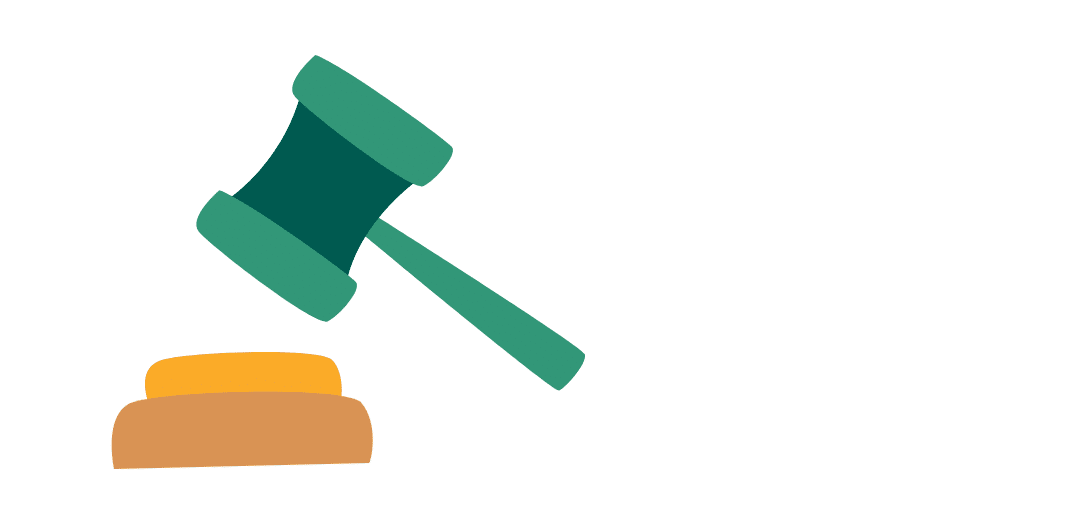
Common Accessibility Barriers in Higher Education
There are several common accessibility barriers in higher education, including:
- Physical barriers: This refers to inaccessible buildings, classrooms, and other institutional facilities. These barriers can prevent students with mobility impairments from accessing certain parts of campus or participating in some activities.
- Technological barriers: Students with disabilities may have difficulty accessing digital content, such as online course materials, due to inaccessible technology. For example, some students lack access to websites or learning management systems.
- Communication barriers: These can arise when faculty and staff do not provide alternative formats or communication methods for students who are hard of hearing, have speech impairments, or have other communication-related disabilities. In addition, language barriers may exist with international students who aren’t conversant with the language used in the course material.
- Attitude barriers: This covers negative attitudes or assumptions about students with disabilities that can lead to discrimination or exclusion. These attitudes can come from faculty, staff, or fellow students.
- Financial barriers: Many students with disabilities face financial barriers to accessing higher education, such as the cost of assistive technology or specialized accommodations.
- Academic barriers: Students with disabilities may face academic barriers such as inaccessible course materials to cater to their specific disability.Transportation barriers: Students with mobility disabilities may face transportation barriers that pose a challenge to attending classes or participating in campus activities.
Colleges and universities must address these barriers and create an inclusive learning environment for all students.
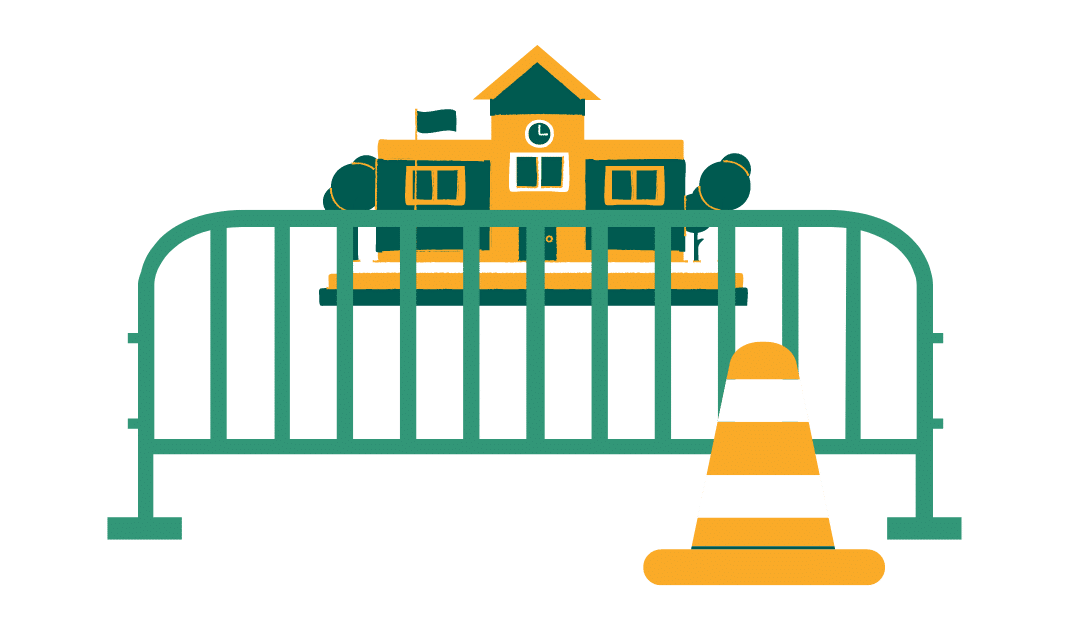
Creating Accessible Learning Environments
Providing Accessible Technology and Digital Resources
Technology can provide a range of solutions for students with disabilities. For example, text-to-speech and speech recognition software, screen readers, and magnification software can help students with visual and hearing impairments or learning disabilities.
Additionally, institutions must ensure that all course materials, including textbooks, readings, and online resources, are accessible to students with disabilities. These solutions may involve creating alternative formats such as large print, Braille, accessible PDF, or providing online courses that students can navigate using only a keyboard.
Technological resources continue to advance, creating new opportunities for wider audiences to engage with digital content. For instance, Amberscript provides dubbing services that allow you to localize your video content in countries where the native language differs from the one used in the video. The services offered in this regard include high-quality translations at affordable prices, human-like synthetic voices, or professional voice-overs.
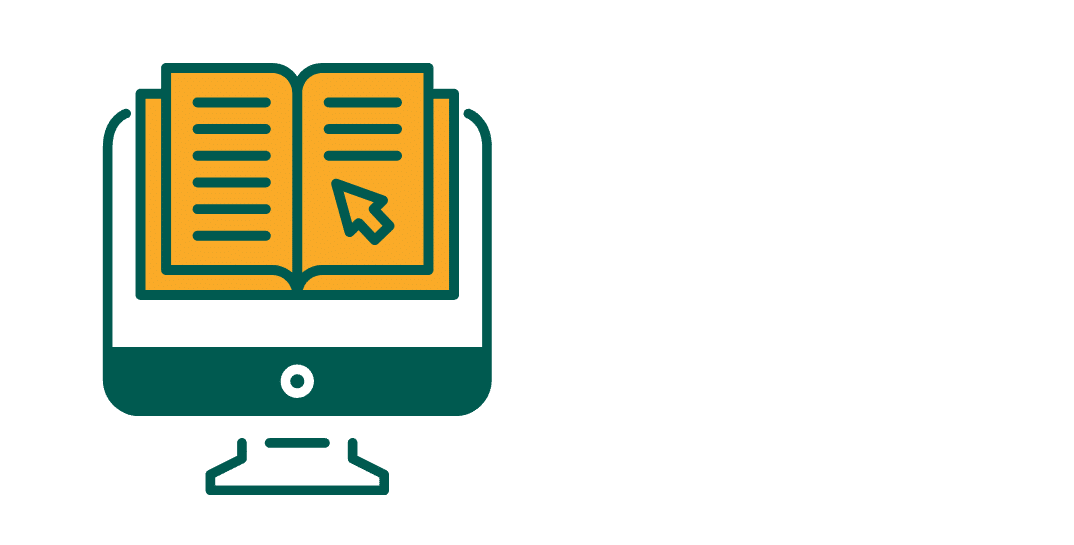
Accommodating Diverse Learning Needs
“If you think education is expensive, try ignorance.” – Jeff Rich. Creating awareness among faculty and staff is a critical first step in accommodating students with disabilities in an institution of higher learning. Unfortunately, when people are ignorant about this reality, the possibility of offense and exclusivity are high, which is detrimental to an institution’s reputation.
Understanding effective communication will promote a culture of inclusion. Below are some strategies to consider:
- Be patient and respectful: People with disabilities may take longer to process information or respond. Give them the time they need and avoid interrupting or talking over them.
- Use clear and concise language: Avoid using technical jargon, abbreviations, or idiomatic expressions that may be difficult to understand. Speak clearly and at a moderate pace.
- Use visual aids: Visual aids such as diagrams, pictures, or videos can be helpful for people with hearing or visual impairments. Use them to illustrate your point and reinforce your message.
- Allow for assistive technology: Some people with disabilities may use assistive technology such as screen readers or communication devices. Be aware of these technologies and how to use them effectively.
- Use inclusive language: Avoid using language that may be offensive or discriminatory. Use person-first language that emphasizes the person rather than their disability.
- Be flexible and adaptable: Different disabilities require different accommodations. Be open to feedback and suggestions from people with disabilities on ways to improve communication.
- Ask questions: If you are unsure how to communicate with someone with a disability, ask them how they prefer to communicate and what accommodations they require.
Considering the diverse differences among students, it is likely that their learning needs will be just as vast. For example, providing captions or transcripts of lectures and other course materials can help students who are hard of hearing and those with auditory processing difficulties.
Providing Accessibility through eLearning Platforms
In today’s world, almost everyone can use digital platforms for both entertainment and education. While this is a good thing, it can also cause problems if not everyone is included. Some people might not have equal access to information or resources, which could create a gap between different groups.
This is why digital accessibility, especially in eLearning platforms, is important now more than ever. With it, every single person, regardless of their physical or cognitive limitations, has access to equal opportunities when it comes to consuming digital content. To achieve this, there are numerous methods for enhancing accessibility in eLearning platforms, such as using easy-to-understand language, designing a keyboard-friendly interface, using high-contrast colors, and using an accessibility service like Amberscript, which provides captions, transcripts, and subtitles.
Common eLearning platforms used in Higher Education
An online eLearning platform is a web-based tool that enables teachers to produce, oversee, and transmit instructional materials to students online.
These platforms are flexible and offer a variety of features and tools that let teachers create and deliver online courses like course management, assessment, communication tools, and analytics tools.
Some of the common eLearning platforms include:
-
Blackboard
Blackboard is a comprehensive learning management system (LMS) that allows educators to create and deliver online course content, as well as provide communication tools, assessments, and grading functionality.
-
Moodle
Moodle is an open-source LMS that allows educators to create online courses and assessments. It also includes features such as wikis, forums, and surveys.
-
Udemy
Udemy is an online learning platform that offers courses on a wide range of topics. It allows instructors to create and sell their courses, as well as offer courses from other providers.
-
Canvas
Canvas is a cloud-based LMS that offers a user-friendly interface for course design, delivery, and collaboration. It includes features such as discussion forums, file sharing, and real-time feedback.
-
Brightspace
Brightspace is an LMS that offers adaptive learning functionality and personalized learning experiences for students. It includes tools for course design, communication, and assessment.
-
Coursera
Coursera is another popular MOOC provider that offers courses from top universities and organizations. It includes features such as video lectures, quizzes, and peer-reviewed assignments.
How are eLearning Platforms and Accessibility Related?
Because accessibility is crucial to ensuring that online learning is accessible to all learners, including those with impairments, eLearning platforms, and accessibility are closely intertwined.
To ensure that eLearning platforms can be used with assistive technology, which is frequently used by students with disabilities to access and navigate digital content, these platforms must be built and tested.
Why is accessibility in eLearning platforms important?
Accessibility in eLearning platforms is important because it ensures that individuals with disabilities can access and benefit from educational materials in the same way as those without disabilities.
Providing digital accessibility in eLearning platforms includes ensuring that there are alternatives for multimedia, such as captions, subtitles, and transcripts for videos, audio descriptions for images, and accessible formats for documents.
How Subtitling and Transcription can help with Accessibility
Subtitling and transcription are two important accessibility features that can help individuals with hearing impairments, as well as those who may have difficulty understanding spoken language.
Subtitling
When subtitling a video or audio recording, text that corresponds to the spoken speech is shown on the screen. Since they might not be able to completely comprehend or hear the spoken words, this is especially helpful for those who are deaf or hard of hearing as well as for people learning a new language, or who are not native speakers of the language.
Transcribing
Transcribing spoken speech into written text is called transcription, and it can be useful for people who might have trouble hearing or interpreting spoken language. This can apply to people with a hearing disability or are deaf, those with learning disabilities, or those who are not native speakers of the language.
To increase the digital accessibility of instructional content for all learners, eLearning platforms can use both transcription and subtitling.
Creating Accessible Course Content
Developing accessible course content is an important step toward ensuring that students with disabilities may fully engage in higher education. In this chapter, we look at numerous ways to produce course content that is accessible to all students, regardless of their physical or cognitive abilities.
Making course materials accessible
An essential aspect of creating an inclusive learning environment that benefits all students, regardless of their abilities, is making course materials accessible. The process involves providing alternative formats for course materials such as captions, transcripts, and audio descriptions.
Captions and transcripts are crucial for students with hearing difficulties or who speak a different language, as they provide a written version of the spoken material. Similarly, audio descriptions are useful for students with visual impairments, as they provide a spoken description of visual content.
Additionally, institutions of higher learning should ensure that course materials are easy to navigate and understand. The content should be generated in clear and concise language and organized logically, making it easy for students to access and comprehend. Supplementary support tools such as study guides, summaries, or graphic organizers should also be provided to enhance students’ understanding of the material.
When creating course materials, it’s important to keep in mind the needs of all students, including those with physical or cognitive limitations. By following Universal Design for Learning (UDL) principles, instructors can make course materials that are accessible to all students, without requiring any special accommodations. This means creating course materials that can be easily understood, engaging, and allowing for multiple ways of expressing oneself. Creating accessible course materials can lead to an inclusive learning environment that benefits all students, regardless of their abilities.
Creating accessible online content
Online content allows students with disabilities to participate fully in e-learning platforms. Creating online content involves designing a user-friendly interface that is easy to navigate, and ensuring that all content is accessible through assistive technology.
Online content should use alternative text (alt-text) descriptions for all images and videos. Additionally, using high-contrast colors and providing keyboard navigation options, can help ensure that all students can access the content.
Faculty and staff can also make use of a variety of tools and resources to ensure that their online content is accessible. These include tools for creating subtitles and captions, transcripts, as well as training programs and accessibility guidelines.
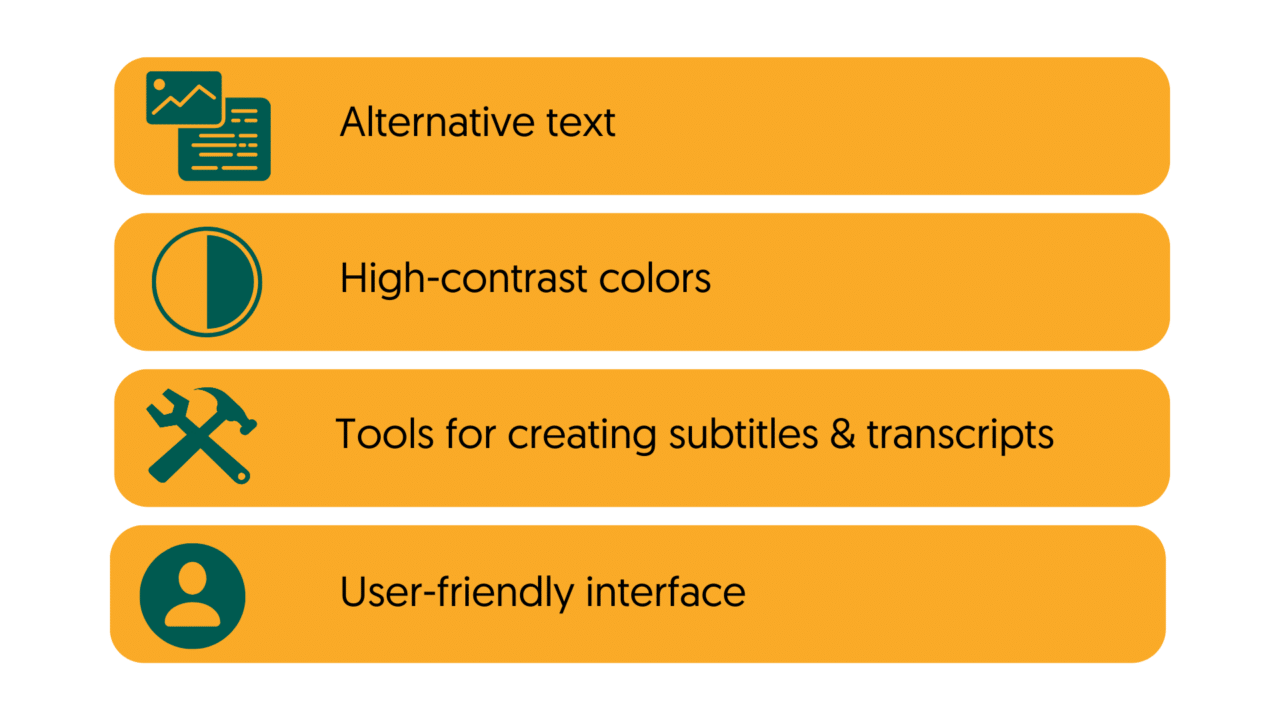
Captioning and transcripts
Captioning and transcripts are important components of creating accessible course content. Real-time captioning, and transcribing are effective solutions to communication barriers for students with disability. These features allow students with hearing impairments or language barriers to access and comprehend course materials effectively.
There are several tools and services available to assist with captioning and transcription, such as Amberscript, which uses advanced speech recognition technology to generate accurate and reliable transcripts and captions. With the help of these tools, instructors can ensure that their course content is accessible to all students, regardless of hearing abilities or language barriers. By providing captioning and transcripts, instructors can create a more inclusive learning environment and improve the overall learning experience for all students.
Dubbing and audio description
Dubbing and audio description are two additional tools that enhance accessibility for students with visual or hearing impairments. Dubbing involves replacing the original audio with a translated version, while audio description involves adding an audio track that describes the visual content of a video.
Dubbing can be particularly useful for courses that involve foreign language content. By providing a dubbed version, students who are not fluent in the original language can still access and understand the material. Similarly, audio description can be beneficial for students with visual impairments, as it describes the visual content that they may not be able to see.
By using dubbing and audio description, instructors can create a more inclusive learning environment and improve the learning experience for all students. Students with hearing or visual impairments can access and understand the material, while other students may benefit from additional language support or descriptive information. Amberscript provides dubbing and audio description services that can help instructors to create accessible content. These services use advanced technology and human expertise to produce high-quality dubbing and audio descriptions that accurately reflect the original content.
Choosing accessible learning tools
There are a few crucial elements to consider while selecting accessible learning materials like software applications. The tool should, first and foremost, be compatible with assistive technologies such as screen readers and other input devices. These compatible tools guarantee that students with impairments may use the tool and actively engage in the learning process.
The tool should be configurable to address the particular needs of students with disabilities. A configurable tool has features like customizable text sizes and colors, different navigation options, and audio descriptions. Another key factor to examine is the tool’s usability and ease of use. The product should be intuitive and simple to use for all students, regardless of technical skill. Finally, the cost and availability of the instrument must be considered. To ensure equitable access for all students, the tool should ideally be affordable and readily available. Selecting accessible learning materials necessitates careful consideration of several aspects to ensure that all students can access and benefit from the learning experience.
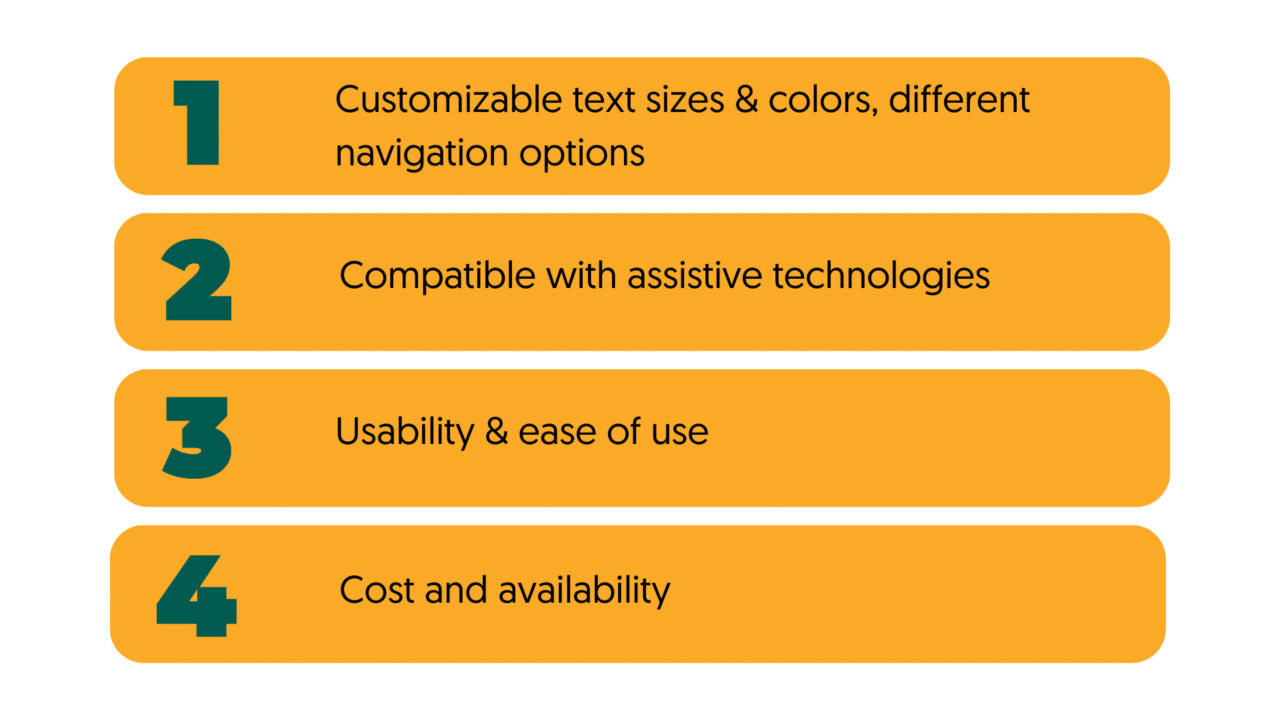
Ensuring Accessibility in Teaching and Assessment
Educators can build an educational setting where all students have an equal opportunity to succeed by guaranteeing accessibility in teaching and evaluation. This chapter emphasizes the significance of meeting a variety of needs and fostering equity in education.
Ensuring accessible teaching methods
Making accessible teaching methods a priority is a critical component of developing an inclusive learning environment in higher education. When developing teaching methods, studies recommend that educators must consider their students’ different needs and guarantee that the methods employed are accessible to all students, regardless of disability.
For this, educators can use accessible instructional materials such as recorded and captioned lectures, presentations that are easy to read and navigate, and course materials that are available in many forms.
Aside from accessible materials, instructional approaches must be devised to accommodate students with impairments. For example, educators must consider the requirements of visually impaired or hard-of-hearing pupils. Educators can consider offering interpreters or captioning services, providing audio transcripts, or using braille or big print materials.
Providing accessible assessment methods
In higher education, assessing students’ knowledge and understanding is a vital aspect of the learning process. However, it is critical to guarantee that all students, including those with disabilities, have access to evaluation methodologies. Making assessment methods more accessible not only promotes equitable chances but also improves the accuracy and validity of assessment outcomes.
There are numerous strategies to guarantee that assessment procedures are accessible. For students with dyslexia or visual impairments, alternative forms for written assessments, such as oral exams or video presentations, can be beneficial.
Students with ADHD or other cognitive difficulties may benefit from extra time or breaks during tests. Furthermore, accessible technology or software, such as screen readers or speech-to-text software, can assist students with impairments in completing examinations easily.
Accommodating students during exams
The examination period is generally hectic and stressful. Students may require assistance in various forms and being accommodative of their needs goes a long way in easing the process. Some children, for example, may require extra time, a calm testing location, or assistive technology. It is the institution’s responsibility to make reasonable accommodations for students to exhibit their knowledge and abilities in a fair and equal manner.
A clear process for requesting and providing accommodations is one approach to ensure that students receive the required accommodations. This procedure should be clearly described to students and staff, and it should include collaboration between the student, the faculty member, and the disability services office. It may also be beneficial to provide faculty with training on how to accommodate students’ needs during assessments.
Additionally, it is important to consider the accessibility of the exam materials themselves. Educators should ensure that visual aids are accessible to students with visual impairments, and that audio materials are accessible to students with hearing impairments. Providing alternative formats, such as Braille or large print, can also be helpful.
Faculty and Staff Training
Accessibility and inclusion will fail if the faculty and staff are not equipped with the necessary skills and the institutions do not promote the culture.
Training faculty and staff on accessibility and inclusion
Training faculty and staff on accessibility and inclusion ensures all students access equal and quality education. This training should be thorough and cover various subjects like accessible course design, captioning and transcription, and the adoption of assistive technology. Institutions should ensure ongoing training to keep the faculty and staff up-to-date with advancements.
Here are a few strategies that higher education institutions can use to train faculty and staff on accessibility and inclusion:
- Offer workshops and training sessions for things such as creating and using accessible documents and presentations, and sources and using assistive technology.
- Provide online resources and training material like videos and webinars on accessibility and inclusion that can be accessed anytime from anywhere.
- Provide assistive technology such as screen readers, text-to-speech software, and transcription software to help the teachers offer quality education to all learners.
- Collaborate with the disability services office to provide training and support on how to work with learners with disabilities.
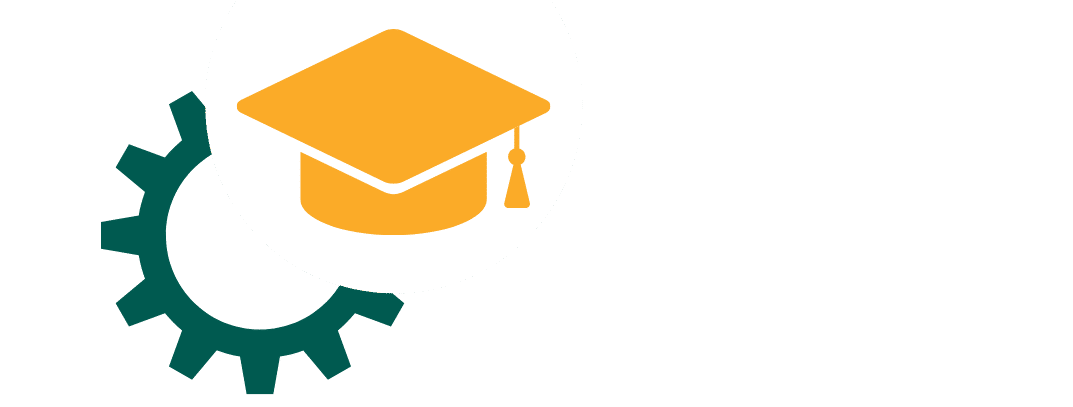
Promoting a culture of accessibility and inclusivity
Promoting a culture of accessibility and inclusivity means creating and supporting environment where accessibility for all is the norm. Institutions can facilitate such a culture through various policies and procedures that support inclusion, giving staff and faculty enough support and resources, and celebrating efforts to promote the issue in their institutions. A culture of accessibility and inclusivity encompasses everyone on campus.
Some strategies for promoting a culture of accessibility and inclusivity include:
- Having a syllabus statement that lets students with disabilities know they are welcome and access useful resources and information
- Being intentional about course policies and creating room for flexibility to accommodate students with disabilities
- Providing accessibility resources such as captioning, transcription, and text-to-speech software to help all students access course material
- Adopting more than one form of presenting information and assessing students, even if you currently don’t have a student with those needs
- Offering ongoing training to the faculty and staff on accessibility and inclusivity
- Enticing the faculty and staff to use universal design principles in their lectures and teaching
Evaluating and Improving Accessibility
Institutions must evaluate their accessibility and inclusivity programs and policies to improve them and ensure all students receive an equal education. This evaluation includes assessing the physical spaces, digital content, communication methods, and other parts of the institution.
This chapter looks into the importance of evaluating accessibility in higher education, how to evaluate accessibility, and how to create an accessibility plan that improves accessibility.
Evaluating Accessibility in higher education
Evaluating accessibility in higher education helps identify the barriers and effectiveness of current accessibility plans and programs. This assessment usually covers all parts of the institution, including both the physical and digital spaces.
Institutions of higher learning assess physical spaces through audits or inspections to identify physical barriers and where they can improve. This audit will ensure buildings have accessible entrances, restrooms, and pathways.
Higher education institutions assess digital access through website accessibility testing, document accessibility testing, and other means. It is done to ascertain that all students, including those with visual, hearing, or cognitive disabilities, can access digital content. The evaluation includes checking for alternative text for images, video captioning, and accessible document formats.
Communication methods also need evaluation for accessibility. Institutions must ensure that all students access all communicated information through email, websites, and social media. It includes checking whether the institution is providing transcripts for audio content, sign language interpreters, and other alternative formats.
Creating an accessibility plan
Creating an accessibility plan is crucial for institutions to improve their accessibility for all students. The plan clearly states the institution’s commitments, goals, timelines, and strategies for improved accessibility. It should cover all parts of the institution, including physical spaces, online or digital content, and communication.
The institution should start with an audit to identify areas that need improvement. They’ll then outline clear and specific goals, timelines, and strategies. They should be measurable, attainable, and complement the institution’s mission and values. The accessibility plan should also identify the resources needed to accomplish its objectives. It will include staff, technology, and funding.
Lastly, higher education institutions should communicate their accessibility plan to all stakeholders including learners, faculty, and staff. It should be done through their website, emails, and other methods that ensure all stakeholders get the information. Communication demonstrates the intentionality of accessibility and encourages adoption from stakeholders.
Conclusion
- Accessibility in higher education means creating an environment where all students, including those with disabilities, access equal education
- Accessibility involves all aspects of an institution, including physical space, digital content, and communication methods
- Accessibility in higher education is facilitated through assistive technology, language support, alternative formats of learning materials, etc
- The common accessibility barriers in higher education include physical, technological, communication, and attitudinal barriers
Accessibility and inclusivity should receive top priority from all high education stakeholders. It applies to learners, staff, faculty, and administrators. As a unit, they can create a conducive environment. that prioritizes accessibility.
Improving accessibility in higher education is not only the proper thing to do but also the law. Prioritizing and pushing for accessibility and inclusion creates an equal environment and atmosphere for all learners. Institutions must acknowledge that it is an ongoing process that needs constant improvement. So, they must assess and evaluate their accessibility measures to ensure everything runs smoothly.